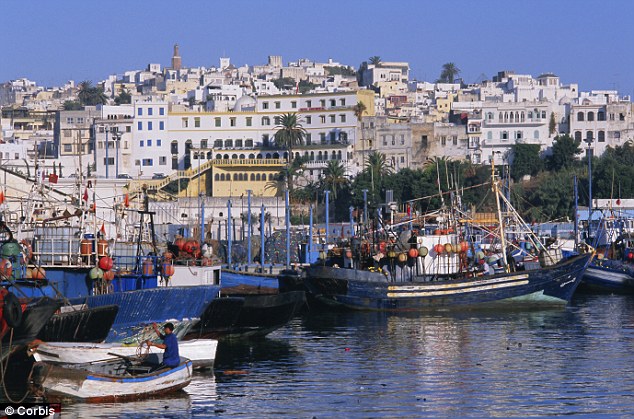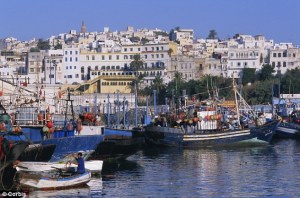
BY NATALIE WYATT
The city of Tangier lies on the very tip of Northern Morocco on the Straits of Gibraltar, looking out at Tarifa in Southern Spain, only 10 miles away at its closest point. For many tourists and Moroccans alike Tangier is a fascinating hybrid city that unites Andalusia in Europe and the Maghreb region of Africa. Tangier is a city that incorporates some of the best architecture, art, and food of both regions.

But for the many West African immigrants that have illegally entered Tangier from countries like Mauritania, Senegal, and Nigeria, the city represents the last impossible hurdle to entering Europe, and what they expect to be a better life. The border between Morocco and Spain at Ceuta represents one of the starkest GDP differences between two bordering countries in the world. The tip of Europe, just a couple of miles away from Tangier’s beaches, is literally visible, yet held just out of reach. Many of these immigrants attempt to cross the straits in petite zodiacs, rubber boats that can flip easily when a large waves crashes against them. Others try to enter the Spanish enclave of Ceuta, a small portion of Northern Morocco that is still Spanish territory and lies east of Tangier on the Moroccan side of the straits. Towering fences keep many of these immigrants out; they hide in the forests around the area and live with little food or shelter as they wait to attempt another crossing into Ceuta. Much of Morocco’s cross-cultural exchanges are positive, and have created a culture that is at once African, Arab, and European. But Tangier and Ceuta demonstrate some of the more negative implications of Morocco’s place as a borderland between two continents.
To enforce borders, Morocco has decided that illegal immigrants caught crossing the border will be imprisoned for up to five years as a way of discouraging the exodus. For its part, Spain has taken the strategy of using rubber bullets and other deterrents to stop many from crossing the straits successfully. If captured, immigrants will enter the Centros de Internamiento de Extranjeros, detainment camps in Southern Spain known for squalid living conditions, where they remain until the Spanish police send them back across the Straits of Gibraltar. To house immigrants who are waiting to attempt the crossing – for the first time, or, in many cases, the second or third – Communities have developed in Tangier and the forests around Ceuta. These townships consists of rows of shanties that few tourists will every see, let alone know exist.
When I was in Tangier last weekend, I met Chris, a Senegalese man only a few years older than myself. Chris works for No Borders Morocco, a NGO that works to protect the rights of these immigrants while also mitigating the risks immigrants take when trying to cross the border. Workers at No Borders Morocco send out warning advisories to the shantytowns if the weather at sea is rough, as well as give immigrants cards with numbers to call when they reach the Spanish side. This support is necessary because many of these people do not speak Spanish, and have no idea what to expect if they make it into Europe. For many, the journey from their home village in rural Senegal or Cameroon is incredibly dangerous. Crossing the Sahara is a feat in and of itself. However, this final step from Tangier to Tarifa is often the hardest, and immigrants will risk their lives time and time again to succeed. Chris and the rest of No Borders Morocco try to make sure that casualties can be as low as possible. In a park near the French Consulate in Tangier, Chris explained to me that both Morocco and Spain treat these people like hardened criminals, when in reality immigrants are simply trying to make a better life for themselves and their children in one of only ways they know how: by attempting to enter Spain.

Given this dark shadow, Tangier’s visual appeal can feel a little confusing. Andalusian architecture, wide European boulevards, and Spanish food are able to coexist with Arab architecture, narrow Medina streets, and Moroccan tagines with a nuance that marks one of the finest cultural balancing acts one can experience. However, its cross continental location, the very thing that makes Tangier (and Morocco itself) so unique, has also made it a site for one worst abuses of immigrant rights in the world.
For now, every day, many tourists take the ferry from Tarifa to Tangier without a single thought as to how significant that crossing is, or of the many lives risked daily for that same opportunity.